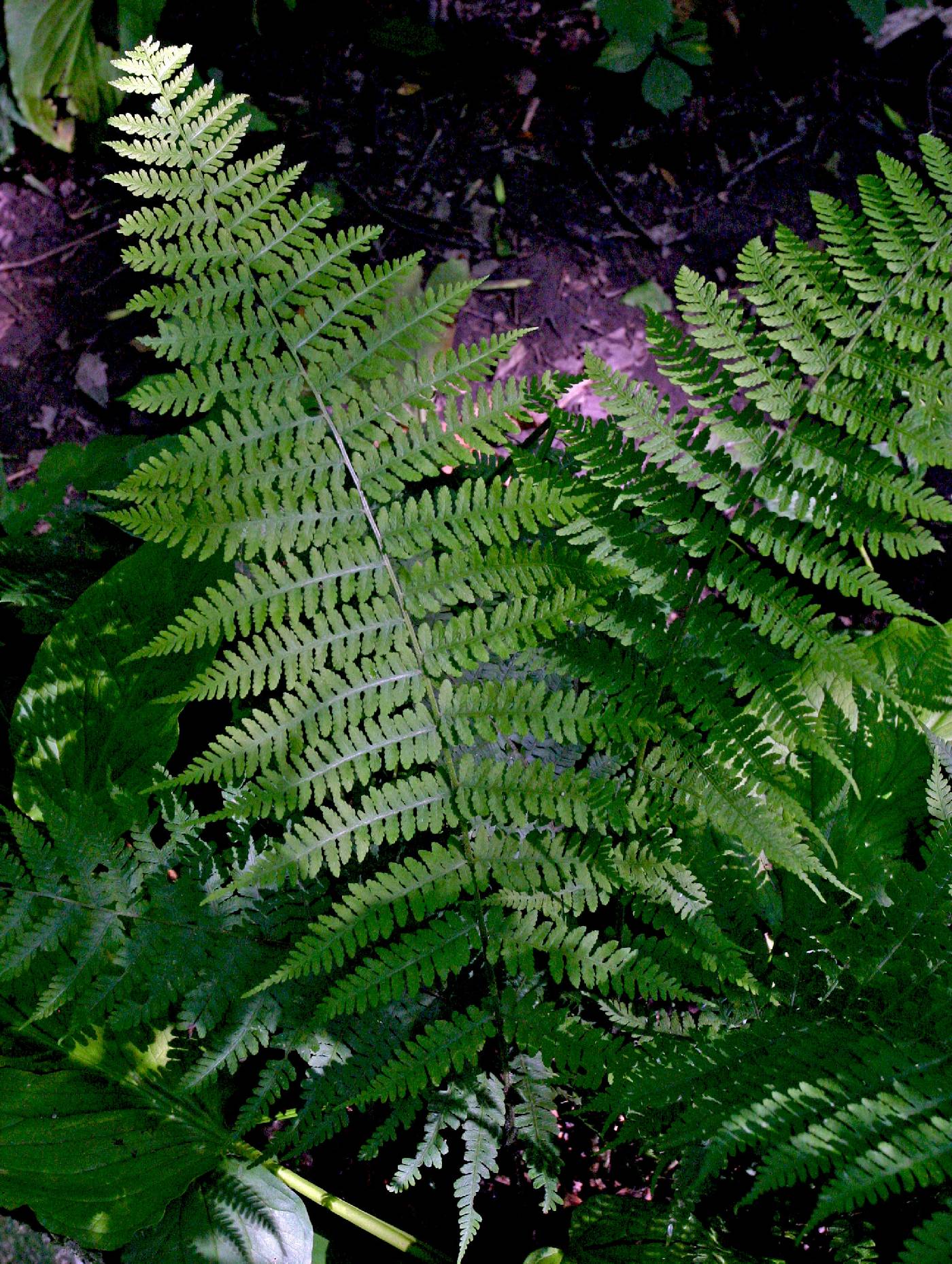Deparia
|
Family: Athyriaceae |
Plants terrestrial. Stems creeping, stolons absent. Leaves monomorphic, dying back in winter. Petiole 1/3--2/3 length of blade, base swollen and persisting as trophopod over winter or not; vascular bundles 2, lateral, lunate in cross section. Blade elliptic to ovate-lanceolate, 1-pinnate-pinnatifid [pinnatifid to 3-pinnate-pinnatifid], gradually reduced distally to pinnatifid apex, herbaceous. Pinnae not articulate to rachis, segment margins entire, crenulate, or serrate; proximal pinnae (several pairs) reduced or not, sessile, equilateral; costae adaxially shallowly grooved, grooves not continuous with that of rachis; indument on rachis and costae (both sides) of multicellular hairs. Veins free, simple or forked. Sori on veins, elongate, ± straight, or hooked at distal end; indusia linear, laterally attached, persistent. Spores brownish, broadly winged. x = 40. Petiole bases are swollen and toothed in sect. Lunathyrium (Koidzumi) M. Kato but not or only slightly thickened and without teeth in sects. Athyriopsis (Ching) M. Kato, Deparia , and Dryoathyrium (Ching) M. Kato. Two American species, one native and the other introduced, are usually placed in Athyrium or Diplazium . The genus Deparia , however, including these two species, is sufficiently distinct to warrant generic separation because of its nondecurrent costal grooves and the presence of multicellular hairs on blades (M. Kato 1984).
|

